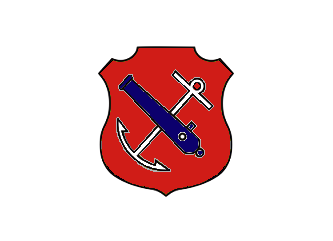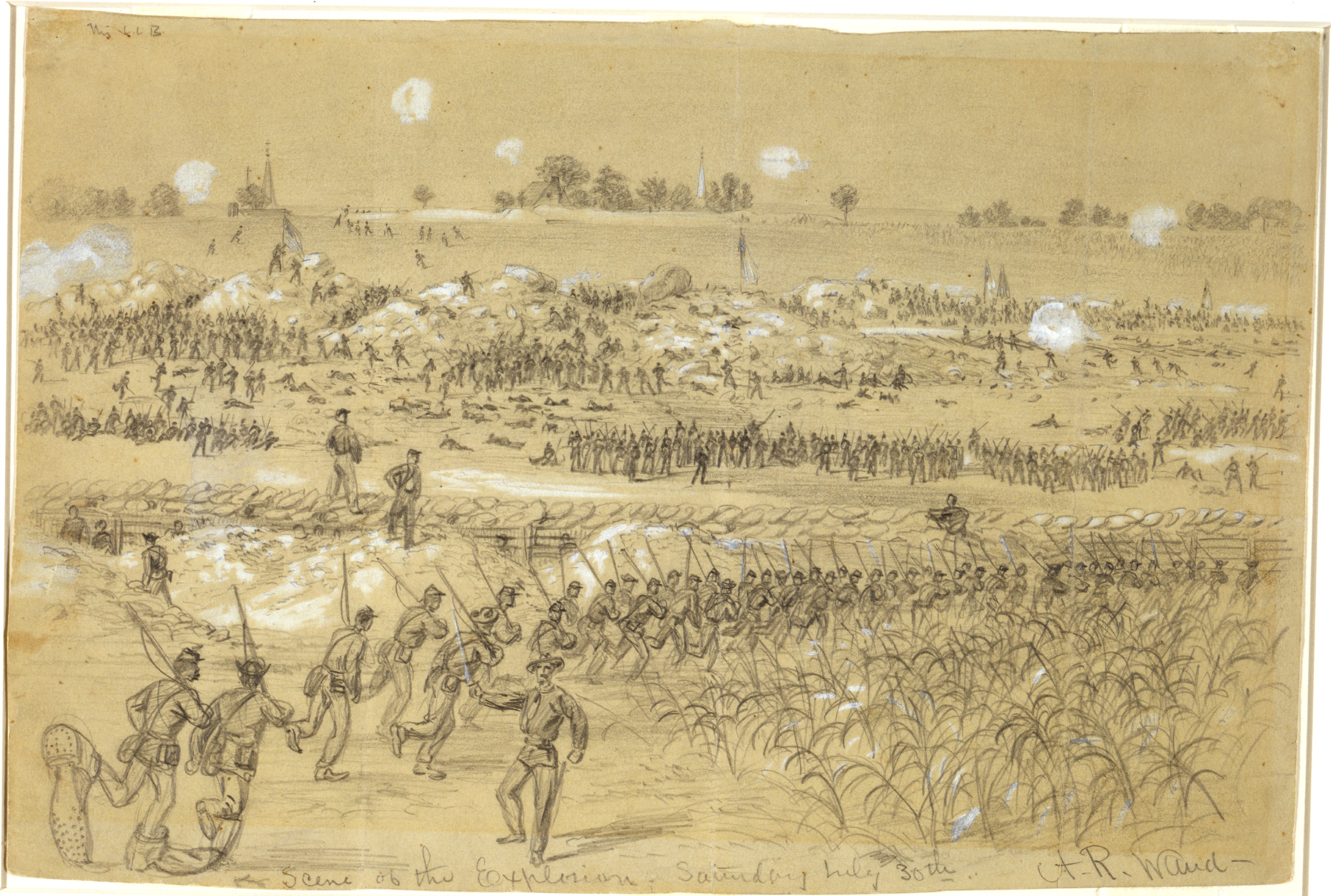|
IX Corps (ACW)
IX Corps (Ninth Army Corps) was a corps of the Union Army during the American Civil War that distinguished itself in combat in multiple theaters: the Carolinas, Virginia, Kentucky, Tennessee, and Mississippi. Corps history Formation, Second Bull Run, and Antietam Although the official order designating its number was not issued until July 22, 1862, the IX Corps organization dates from the expedition to North Carolina in February, 1862, under Ambrose E. Burnside and to the operations about Hilton Head, South Carolina, because the troops engaged in these movements were the only ones used in the formation of the corps. The corps was assembled by Burnside at Newport News, Virginia, from his two brigades from North Carolina and Isaac Stevens's division from Hilton Head. The corps consisted of three divisions, under Generals Stevens, Jesse L. Reno, and John G. Parke. After a short stay at Newport News the corps was ordered to reinforce Maj. Gen. John Pope's Army of Virginia ... [...More Info...] [...Related Items...] OR: [Wikipedia] [Google] [Baidu] |
United States Army
The United States Army (USA) is the primary Land warfare, land service branch of the United States Department of Defense. It is designated as the Army of the United States in the United States Constitution.Article II, section 2, clause 1 of the United States Constitution (1789).See alsTitle 10, Subtitle B, Chapter 301, Section 3001 It operates under the authority, direction, and control of the United States Secretary of Defense, United States secretary of defense. It is one of the six armed forces and one of the eight uniformed services of the United States. The Army is the most senior branch in order of precedence amongst the armed services. It has its roots in the Continental Army, formed on 14 June 1775 to fight against the British for independence during the American Revolutionary War (1775–1783). After the Revolutionary War, the Congress of the Confederation created the United States Army on 3 June 1784 to replace the disbanded Continental Army.Library of CongressJournals ... [...More Info...] [...Related Items...] OR: [Wikipedia] [Google] [Baidu] |
Battle Of North Anna
The Battle of North Anna was fought May 23–26, 1864, as part of Union Army, Union Lieutenant General (United States), Lt. Gen. Ulysses S. Grant's Overland Campaign against Confederate States Army, Confederate Gen. Robert E. Lee's Army of Northern Virginia. It consisted of a series of small actions near the North Anna River in central Virginia rather than a general engagement between the armies. The individual actions are sometimes separately known as: Telegraph Road Bridge and Jericho Mills (for actions on May 23); Ox Ford, Quarles Mill, and Hanover Junction (May 24). After disengaging from the stalemate at Battle of Spotsylvania Court House, Spotsylvania Court House, Grant moved his army to the southeast, hoping to lure Lee into battle on open ground. He lost the race to Lee's next defensive position south of the North Anna River, but Lee needed to figure out Grant's intention and initially prepared no significant defensive works. On May 23, the Union V Corps (Union Army), V C ... [...More Info...] [...Related Items...] OR: [Wikipedia] [Google] [Baidu] |
John G
John is a common English name and surname: * John (given name) * John (surname) John may also refer to: New Testament Works * Gospel of John, a title often shortened to John * First Epistle of John, often shortened to 1 John * Second Epistle of John, often shortened to 2 John * Third Epistle of John, often shortened to 3 John People * John the Baptist (died ), regarded as a prophet and the forerunner of Jesus Christ * John the Apostle (died ), one of the twelve apostles of Jesus Christ * John the Evangelist, assigned author of the Fourth Gospel, once identified with the Apostle * John of Patmos, also known as John the Divine or John the Revelator, the author of the Book of Revelation, once identified with the Apostle * John the Presbyter, a figure either identified with or distinguished from the Apostle, the Evangelist and John of Patmos Other people with the given name Religious figures * John, father of Andrew the Apostle and Saint Peter * Pope John ( ... [...More Info...] [...Related Items...] OR: [Wikipedia] [Google] [Baidu] |
Orlando B
Orlando commonly refers to: * Orlando, Florida, a city in the United States Orlando may also refer to: People * Orlando (given name), a masculine name, includes a list of people with the name * Orlando (surname), includes a list of people with the name * Orlando (Frankish warrior) (died 778), the military leader best known as Roland who inspired the Italian medieval icon "Orlando" Fictional characters * Orlando (character), the central character in a sequence of Italian verse romances from Dante, Ariosto and others * Orlando (''As You Like It''), a character in William Shakespeare's ''As You Like It'' * Orlando, the title character of '' Orlando: A Biography'', a novel by Virginia Woolf, and its film and stage adaptations * Orlando (fictional cat), central figure in Katherine Hale's ''The Marmalade Cat'' 1938–1972 series of children's books * Orlando, a character from the comic book '' The Invisibles'' * Orlando, a character from a comic book series ''The League of Extraord ... [...More Info...] [...Related Items...] OR: [Wikipedia] [Google] [Baidu] |
Ambrose Burnside
Ambrose Everts Burnside (May 23, 1824 – September 13, 1881) was an American army officer and politician who became a senior Union general in the American Civil War and a three-time Governor of Rhode Island, as well as being a successful inventor and industrialist. He achieved some of the earliest victories in the Eastern theater of the Civil War, but was then promoted above his abilities, and is mainly remembered for two disastrous defeats, at Fredericksburg (December 1862) and the Battle of the Crater (July 1864, during the Siege of Petersburg). Although an inquiry cleared him of blame in the latter case, he never regained credibility as an army commander. Burnside was a modest and unassuming individual, mindful of his limitations, who had been propelled to high command against his will. He could be described as a genuinely unlucky man, both in battle and in commerce (he was cheated of the profits of a successful cavalry firearm that had been his own invention) ... [...More Info...] [...Related Items...] OR: [Wikipedia] [Google] [Baidu] |
Battle Of Fort Stedman
The Battle of Fort Stedman, also known as the Battle of Hare's Hill, was fought on March 25, 1865, during the final weeks of the American Civil War. The Union Army fortification in the siege lines around Petersburg, Virginia, was attacked in a pre-dawn Confederate assault by troops led by Maj. Gen. John B. Gordon. The attack was the last serious attempt by Confederate troops to break the Siege of Petersburg. After an initial success, Gordon's men were driven back by Union troops of the IX Corps commanded by Maj. Gen. John G. Parke. Background During March 1865, Confederate General Robert E. Lee continued to defend his positions around Petersburg, but his Army was weakened by desertion, disease, and shortage of supplies and he was outnumbered by his Union counterpart, Lt. Gen. Ulysses S. Grant, by about 125,000 to 50,000. He asked Maj. Gen. John B. Gordon for advice. Gordon replied that he had three recommendations, in decreasing order of preference: first, offer peace terms ... [...More Info...] [...Related Items...] OR: [Wikipedia] [Google] [Baidu] |
Battle Of Globe Tavern
The Battle of Globe Tavern, also known as the Second Battle of the Weldon Railroad, fought August 18–21, 1864, south of Petersburg, Virginia, was the second attempt of the Union Army to sever the Weldon Railroad during the siege of Petersburg of the American Civil War. A Union force under Major General Gouverneur K. Warren destroyed miles of track and withstood strong attacks from Confederate troops under General P.G.T. Beauregard and Lieutenant General A.P. Hill. It was the first Union victory in the Richmond–Petersburg Campaign. It forced the Confederates to carry their supplies by wagon to bypass the new Union lines that were extended farther to the south and west. Background As the siege of Petersburg began to take hold, Union lieutenant general Ulysses S. Grant continued to look for ways to sever the railroad links supplying the city of Petersburg, Virginia, Confederate general Robert E. Lee's army, and the Confederate capital of Richmond. One of these critical ... [...More Info...] [...Related Items...] OR: [Wikipedia] [Google] [Baidu] |
Battle Of The Crater
The Battle of the Crater took place during the American Civil War, part of the Siege of Petersburg. It occurred on Saturday, July 30, 1864, between the Confederate Army of Northern Virginia, commanded by General Robert E. Lee, and the Union Army of the Potomac, commanded by Major General George G. Meade (under the direct supervision of the general-in-chief, Lieutenant General Ulysses S. Grant). After weeks of preparation, on July 30 Union forces exploded a mine across from Union Major General Ambrose E. Burnside's IX Corps sector, blowing a gap in the Confederate defenses of Petersburg, Virginia. Instead of being a decisive advantage to the Union, this precipitated a rapid deterioration in the Union position. Unit after unit charged into and around the crater, where most of the soldiers milled in confusion in the bottom of the crater. Grant considered this failed assault as "the saddest affair I have witnessed in this war." The Confederates quickly recovered, and launche ... [...More Info...] [...Related Items...] OR: [Wikipedia] [Google] [Baidu] |




